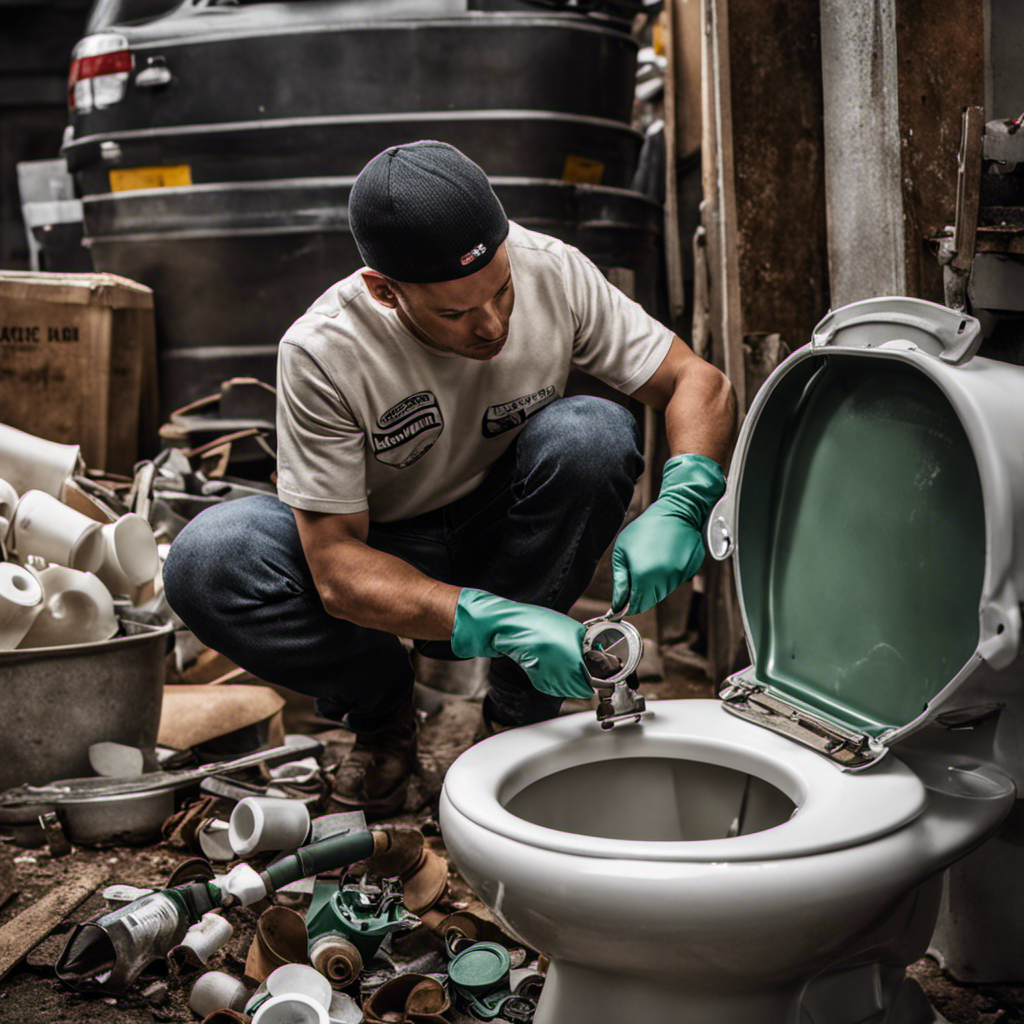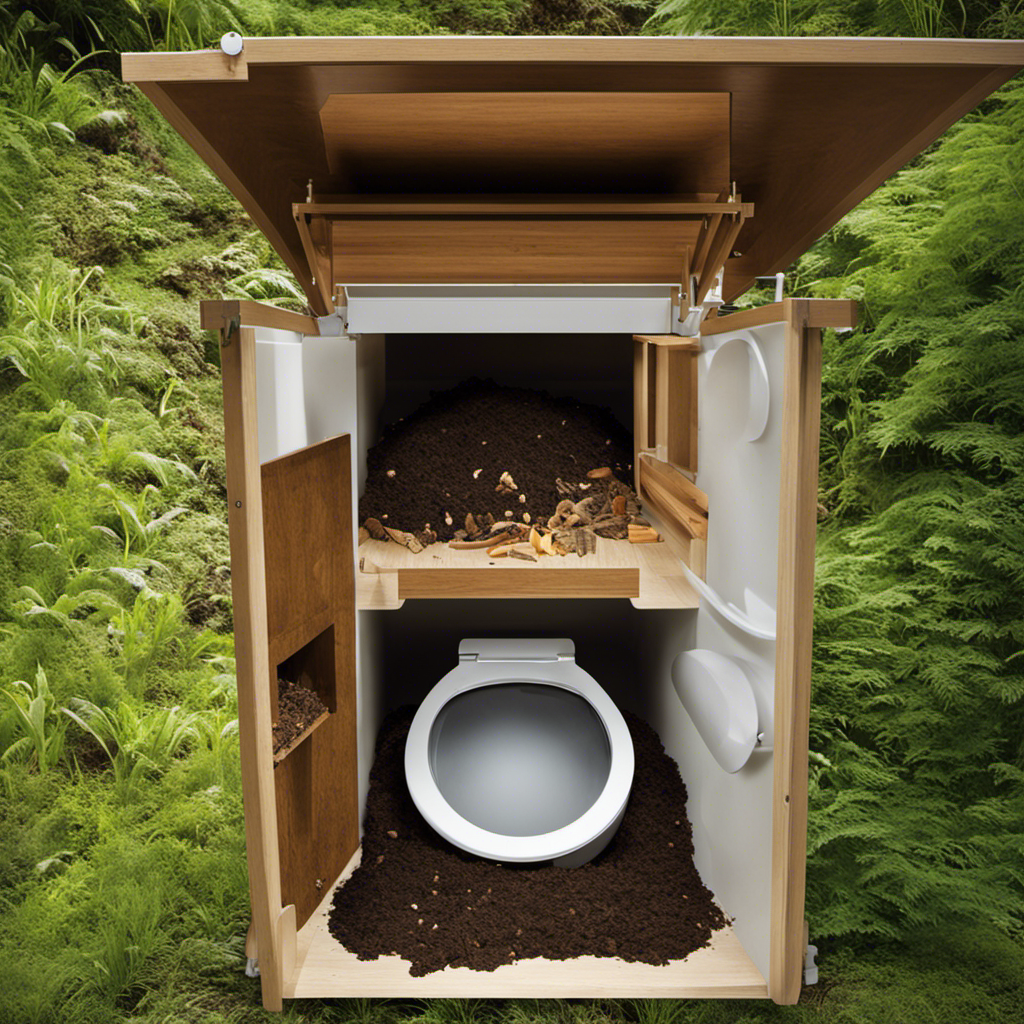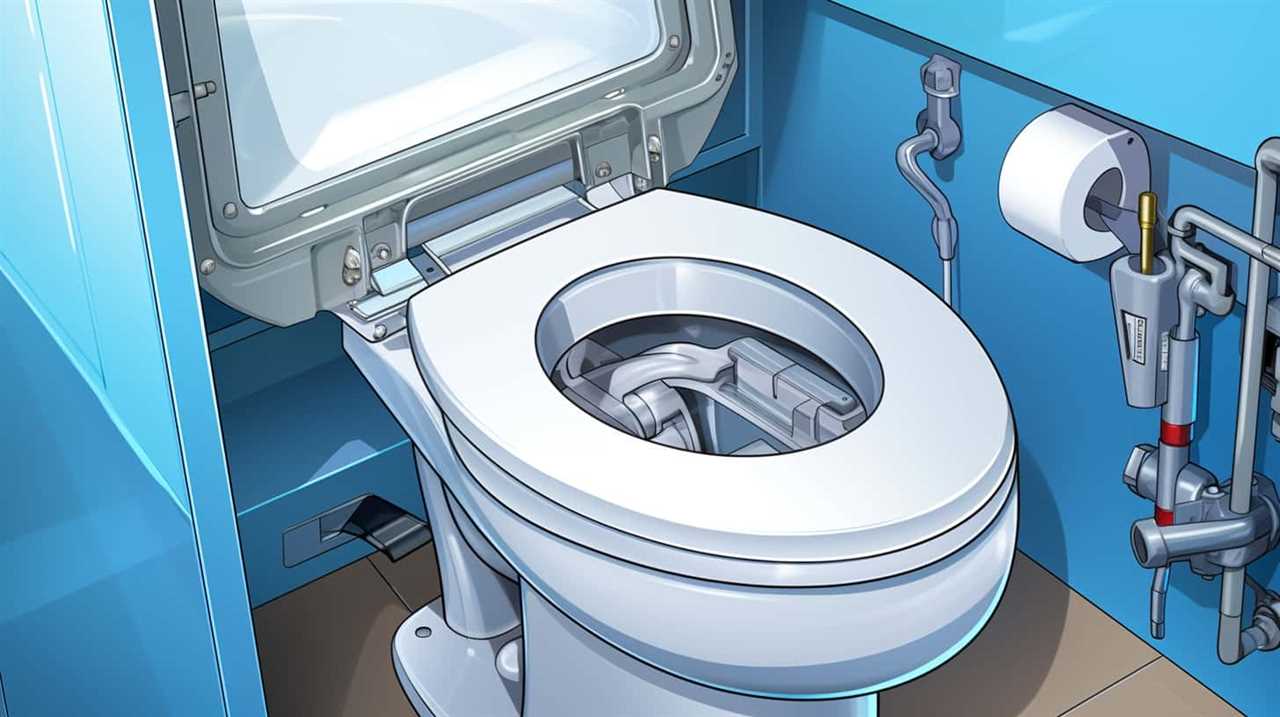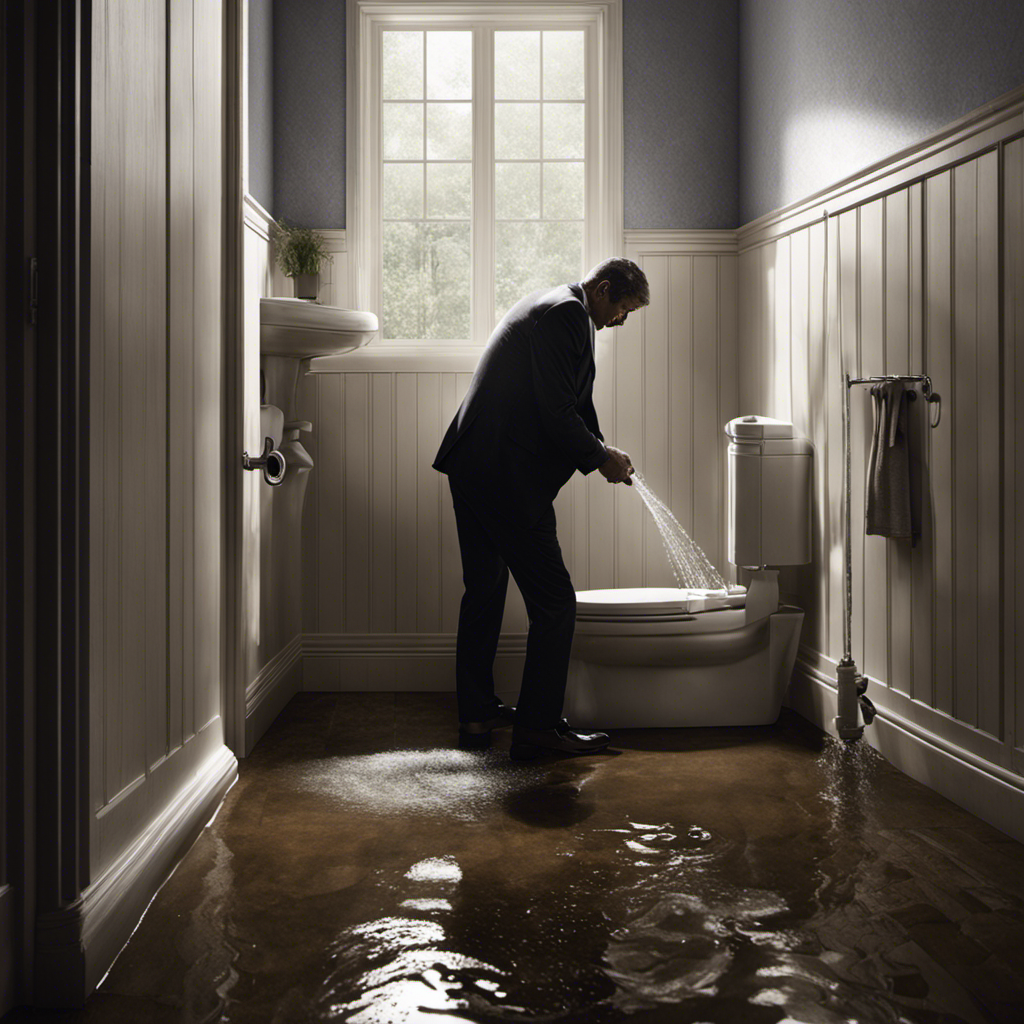I’ve recently found myself in a situation where I needed to dispose of an old toilet, and let me tell you, it wasn’t as straightforward as I thought.
That’s why I’ve decided to put together this article to share my knowledge and provide a step-by-step guide on how to properly dispose of an old toilet.
From assessing its condition to researching local regulations, disconnecting and removing it, to ultimately disposing of it in an environmentally-friendly manner, I’ve got you covered.
Let’s get started!
Key Takeaways
- Assess the condition of the old toilet to determine if it can be repaired or needs replacement.
- Research local regulations and guidelines for proper disposal and recycling options.
- Disconnect and remove the old toilet carefully using the appropriate plumbing tools.
- Properly package and transport the old toilet to prevent leaks or damage during transportation.
Assessing the Condition of the Old Toilet
You should start by checking if the old toilet is cracked or damaged in any way. This is important because if the toilet is beyond repair, it may need to be replaced instead of refurbished.
Inspect the toilet carefully, looking for any visible cracks, chips, or leaks. If you find any, it is likely that the toilet cannot be repaired and should be replaced.
However, if the toilet is in good condition, it may be worth considering repairing or refurbishing it instead of disposing of it. This can save money and reduce waste.
Another option is to donate the old toilet to a local charity. Some organizations accept gently used toilets and other bathroom fixtures to be used in housing projects or sold to fund their programs.
Researching Local Regulations and Guidelines
Before researching local regulations and guidelines, it’s important to understand the proper way to handle an old toilet. Exploring alternative disposal options can help minimize environmental impact and ensure proper waste management. Additionally, understanding potential health and safety hazards associated with old toilets is crucial for personal well-being. Here are some key points to consider:
-
Alternative disposal options:
-
Contact local recycling centers to inquire about toilet recycling programs.
-
Explore donation opportunities to charitable organizations or community projects that may repurpose old toilets.
-
Consult with professional waste management companies that specialize in handling large or hazardous items.
-
Potential health and safety hazards:
-
Old toilets may contain lead-based paint or asbestos, which can be harmful if not handled properly.
-
Broken or sharp edges can pose a risk of injury during handling and transportation.
-
Improper disposal can lead to contamination of water sources and soil.
Disconnecting and Removing the Old Toilet
When disconnecting and removing the old toilet, it’s important to turn off the water supply and disconnect the water line. This ensures that there won’t be any leaks or water damage during the process. To accomplish this, you will need a few plumbing tools such as an adjustable wrench and a pair of pliers. First, shut off the water supply valve located near the base of the toilet. Next, flush the toilet to remove any water remaining in the tank and bowl. Disconnect the water line from the bottom of the tank using an adjustable wrench. Be prepared for some water to drip out, so have a bucket or towels handy. Once the water line is disconnected, carefully lift the toilet off the floor and set it aside.
| Plumbing Tools | Purpose |
|---|---|
| Adjustable Wrench | To loosen and tighten nuts |
| Pliers | To grip and hold objects |
Properly Packaging and Transporting the Old Toilet
To prevent any mess or damage, it’s essential to securely wrap and transport the previous toilet. Here are some packaging techniques and transportation methods to ensure a smooth process:
- Use heavy-duty plastic wrap or garbage bags to cover the toilet and seal it tightly to prevent any leaks or spills during transportation.
- Place the wrapped toilet in a sturdy box or crate, making sure it fits snugly to prevent any movement or shifting.
- Use packing material such as bubble wrap or packing peanuts to provide cushioning and protect the toilet from any impact or breakage.
By following these packaging techniques and transportation methods, you can safely transport your old toilet without any hassle or damage.
Now, let’s move on to the next step: disposing of the old toilet in an environmentally-friendly manner.
Disposing of the Old Toilet in an Environmentally-Friendly Manner
To minimize environmental impact, it’s important to find eco-friendly ways to get rid of the previous toilet. Instead of simply throwing it away, consider recycling options or composting alternatives. Recycling the old toilet is a sustainable choice that can help reduce waste and conserve resources. Many recycling centers accept porcelain toilets and can process them into new materials. Composting is another environmentally-friendly option. By breaking down the toilet’s organic materials, such as wood and paper, in a composting system, you can create nutrient-rich soil amendments for your garden. Here is a table outlining some recycling and composting options:
| Recycling Options | Composting Alternatives |
|---|---|
| Donate to a non-profit organization | Create a compost pile in your backyard |
| Contact your local recycling center | Use a composting bin or tumbler |
| Look for recycling programs in your area | Utilize a composting service |
| Search for online recycling platforms | Participate in community composting initiatives |
| Explore upcycling possibilities | Consider vermicomposting with worms |
Frequently Asked Questions
How Do I Find Out if My Local Recycling Center Accepts Old Toilets?
I’ll start by discussing how to find out if my local recycling center accepts old toilets. Then, I’ll provide information on alternative disposal methods. It’s important to check the recycling center requirements and explore other options for responsible disposal.
Can I Donate My Old Toilet to a Salvage Yard or Reuse Center?
I’ll discuss donating options and repurposing possibilities for the old toilet. It’s interesting to note that salvage yards and reuse centers can give new life to items, reducing waste.
Is It Safe to Break Apart the Old Toilet to Fit It Into Smaller Packaging?
Breaking apart toilets to fit into smaller packaging is not safe as it can release harmful materials. Instead, consider recycling options such as contacting your local waste management facility or checking if there are special collection events for disposing of old toilets.
Are There Any Specific Guidelines for Disposing of Old Toilets in Apartment Complexes or Multi-Unit Buildings?
In apartment complexes or multi-unit buildings, there are guidelines for disposing of old toilets. It is important to properly dispose of them in a residential area. Let me explain how to do it correctly.
What Are the Potential Hazards Associated With Disposing of an Old Toilet, and How Can I Safely Handle Them?
Potential health risks associated with disposing of an old toilet include exposure to harmful bacteria, mold, and chemicals. To safely handle them, wear protective gloves, use proper sanitation protocols, and dispose of the toilet at designated waste facilities.
Conclusion
In conclusion, disposing of an old toilet may seem like a daunting task, but with the right knowledge and guidance, it can be as smooth as a gentle flush.
By assessing the condition of the toilet, researching local regulations, disconnecting and removing it properly, and packaging it with care, you can ensure a seamless disposal process.
Remember, it’s not just about getting rid of a toilet, it’s about doing so in an environmentally-friendly manner, leaving behind a cleaner and greener world for future generations.
So go ahead and bid farewell to your old throne, knowing you’ve done your part in preserving the planet.










